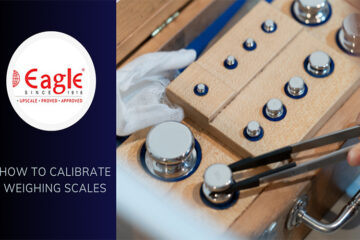If your business relies on the scale for any operation then the first thing you need is to calibrate it. No matter how accurate and precise your scales are, they lose precision at some point or the other. The normal wear and tear, tipsy bumps, mechanical or electrical shocks, moisture, oils, etc can degrade a scale. So, what’s the possible solution? How to upgrade the accuracy of your scales? Well, a sure shot solution for inaccurate scales is-calibration? Never heard of this term before? If not, then this blog is all you need. Today, we’re gonna discuss everything that you need to know about calibration.
Let’s dive in!
First things first, what’s Calibration?
Calibration is the process of determining, verifying, correcting, checking, and testing the accuracy of a scale. It is done to ensure the accuracy of a weighing instrument is in line with the accepted or standard results.
Why is calibration needed?
Calibration is necessary to ensure the weighing results are consistent. It is important for businesses and companies to correctly measure their products as the difference in mentioned weight and actual weight can put a negative impact on the company’s reputation.
Also, it is done to increase the longevity of measuring instruments and scales. The process of calibration involves extensive testing, error checks, and experiments to determine the accuracy of weighing scales on different parameters.
What are the different types of calibration?
There are two different ways to calibrate weight instrument-External and Internal calibration. Let’s discuss each one of them.
External calibration:
It is a manual process of calibrating the scales. It involves the use of a set of approved weighing scale calibration weights. The process starts with placing the calibration weights on different balances to check its mass or weight. The weight of calibration weights is set as a standard to check the accuracy of all the scales. Therefore, it is imperative to buy the calibration weights from a trusted source. Also, these weights must be in top condition so as to avoid any deflection, loss, or gain of mass.
External calibration pros:
- The calibration unit is affordable compared to in-built calibration.
- Calibration can be done using the full capacity range of the scale
External calibration cons:
- The process is quite cumbersome and time-consuming.
Internal calibration:
During internal calibration, the weighing scales are calibrated automatically or to itself without any manual intervention or weight sets. There are various technologies that ensure the accuracy check of weighing scales. Some balances have an advanced in-built feature of setting calibration at a specific time and interval. They also allow calibration with a press of a single button.
Internal calibration pros:
- The process does not require the intervention of lab staff.
- You can calibrate the scales even externally if you want.
Internal calibration cons:
- It is an expensive affair.
- You may require external calibration once in a while.
- The scale is not calibrated to its full capacity range.
What are the different tests carried out during calibration?
There are numerous calibration scales tests that can be carried out depending upon the industry, requirement, application, and of course the regulations. The calibration method can also vary as per the need of the manufacturer. Some of the common calibration tests are:
- Span Calibration: This method is carried out using weights corresponding to the full capacity of the balance.
- Linearity Calibration: This method is the same as that of span calibration, however, you have the liberty to use a midpoint weight as an added reference point.
- Repeatability Test: In this test, the weight is placed at the same spot on the scale and weighed several times.
- Eccentricity Test: During the eccentricity test, the weight is placed at different positions on the balance and weighed multiple times.
- Weighing Test: In this test, the collaborative weight is increased or decreased to check the accuracy of the weighing scale.
- Minimum Weight Test: The minimum weight test aka tolerance test is done to determine the minimum load required to deliver accurate results.
What are the Benefits of calibration?
Apart from delivering better and accurate outputs, calibration has various other benefits. These are:
- It keeps any financial penalties, customer complaints, and legal actions at bay.
- As you deliver what you preach, you create a positive brand image amongst customers and stakeholders.
- Your products can easily pass external and internal audits.
Calibration may seem complex but it remains the most crucial aspect when dealing with scales and balances. To learn more about the calibration contact us our experts today!

0 Comments